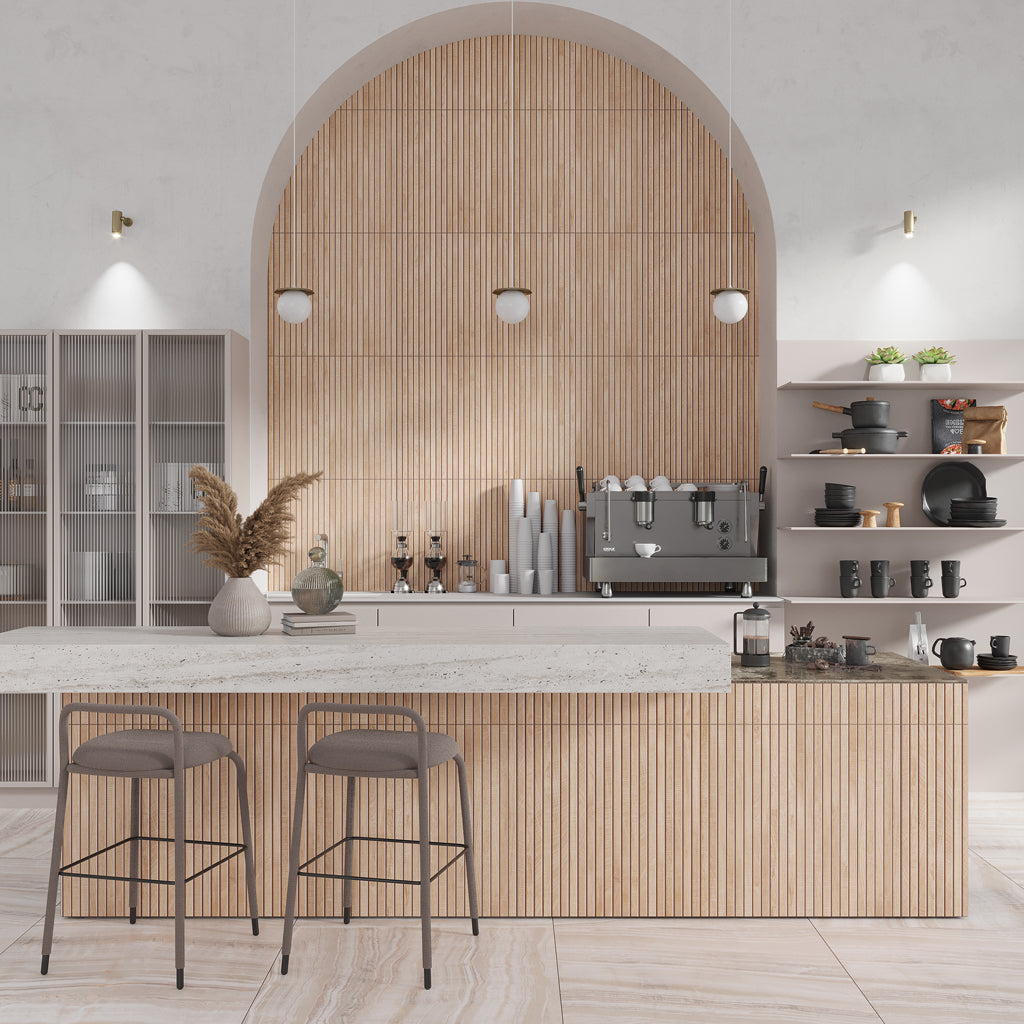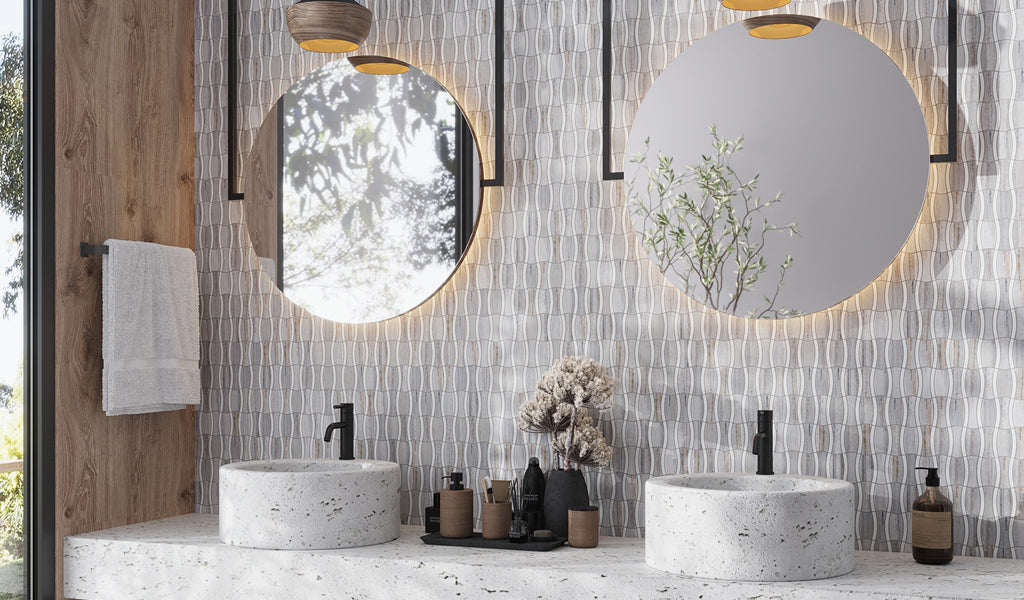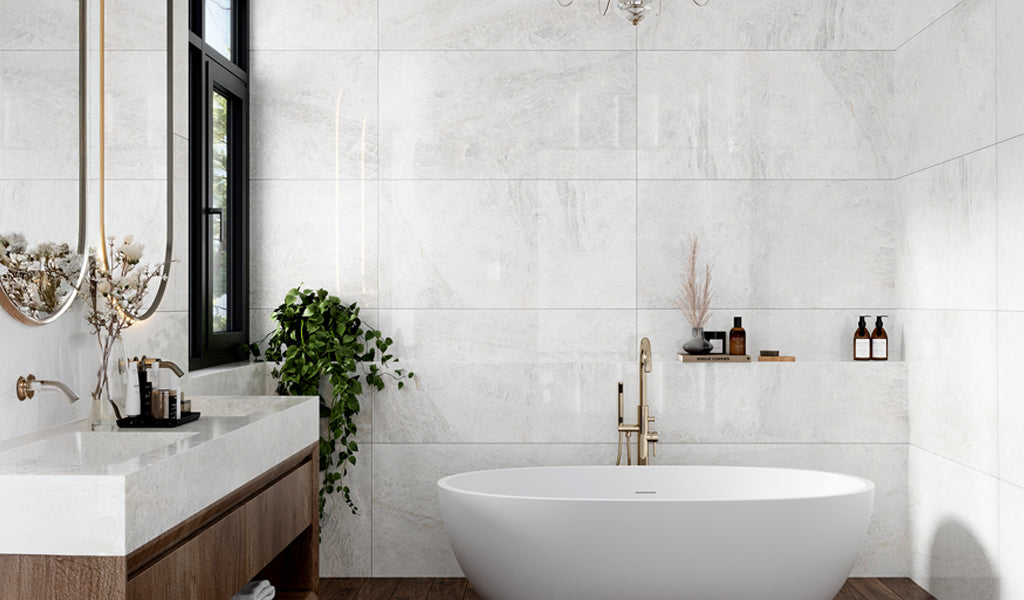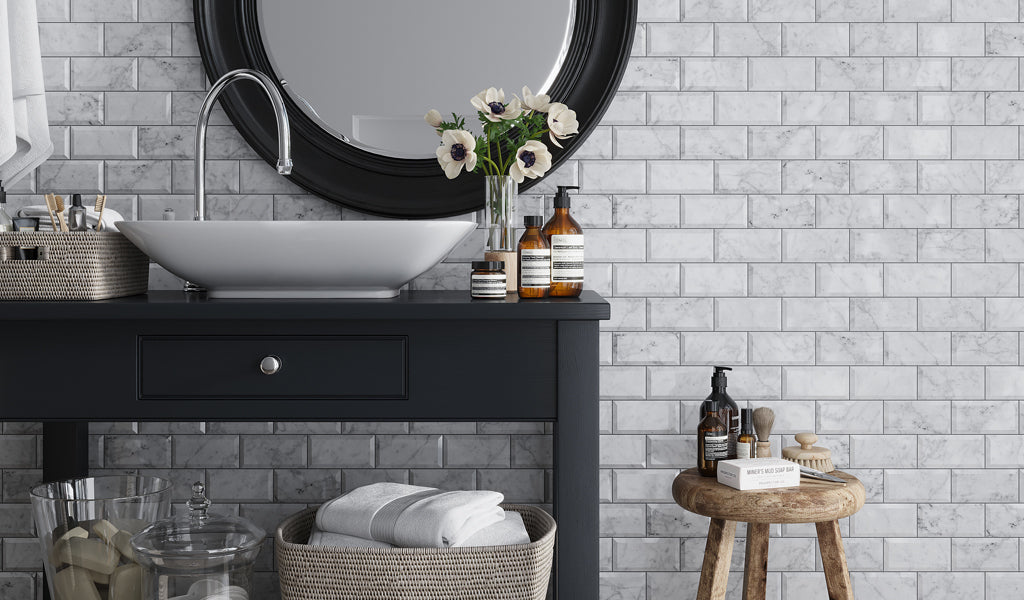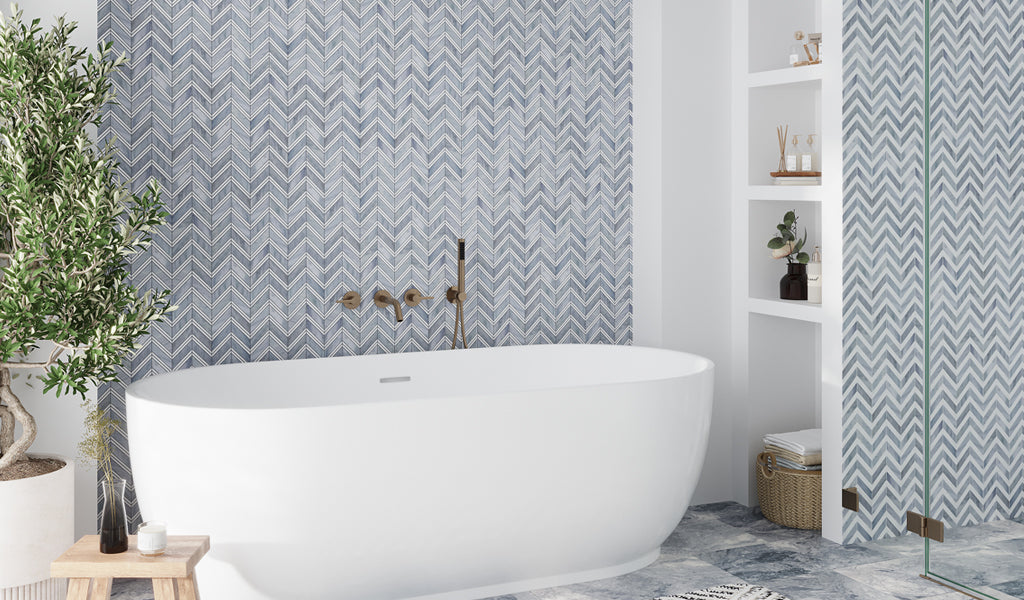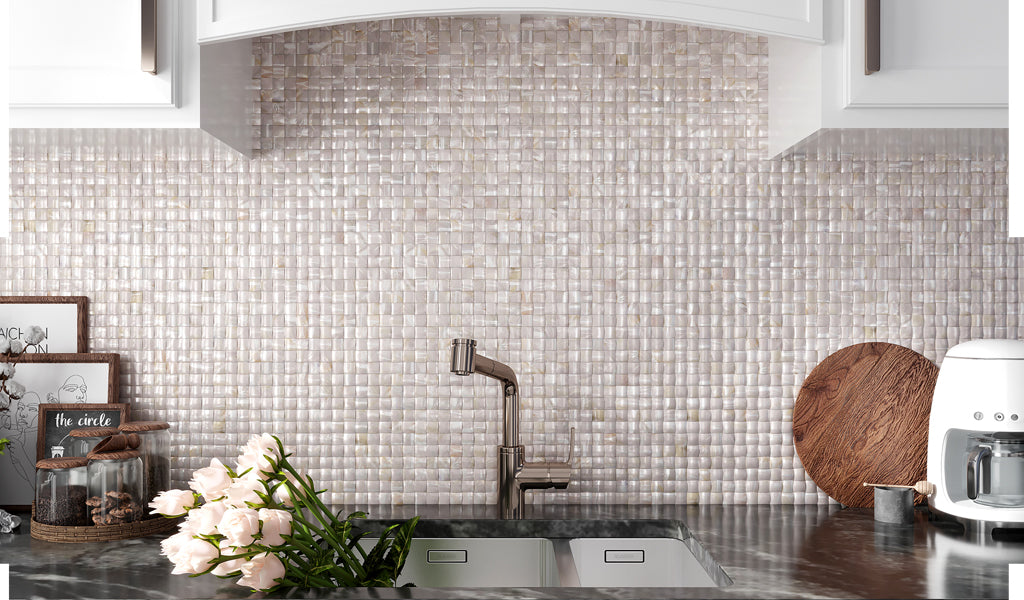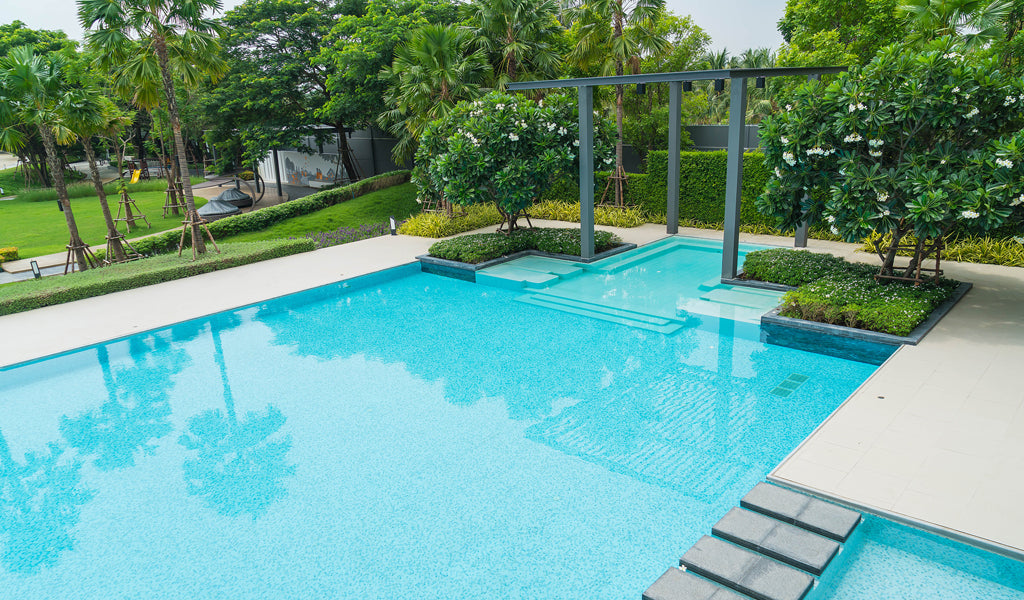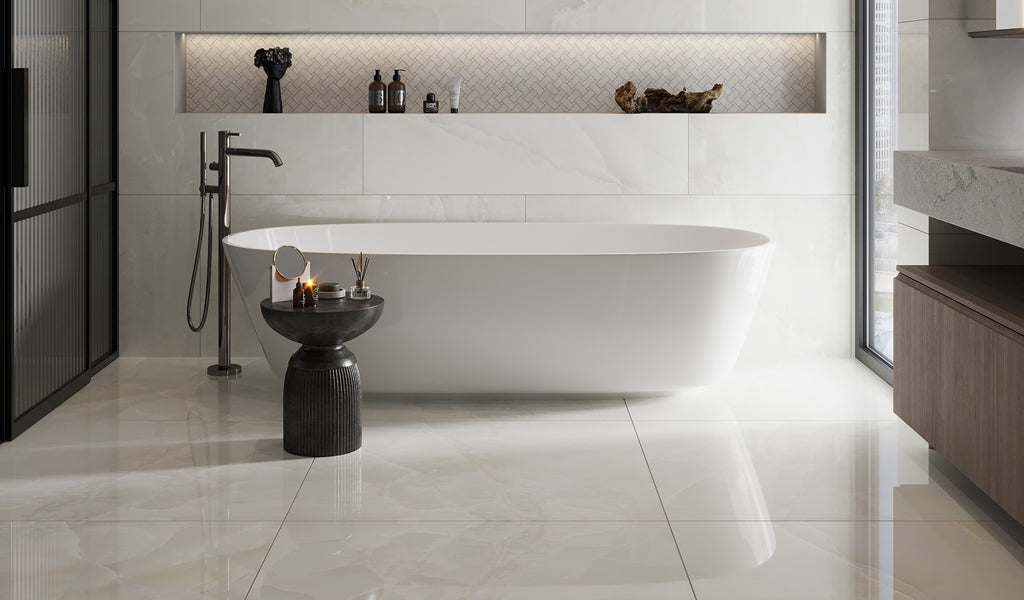Porcelain Vs Ceramic : A Guide to Choosing the Best Option
Oct 23, 2024

When there are plenty of choices, what matters is where you find the right solution. This applies to your tile choice too! Amidst the numerous tile varieties, if you are wondering which to choose and land on ceramic vs porcelain tile, ApolloTile is the right place to get the perfect answer.
Overview of porcelain tile
Renowned for its durability and water resistance, porcelain tile is highly resistant to frost and thermal shock. It is also suitable for high-traffic areas and requires very little maintenance. Porcelain tile doesn't react to acidic or alkaline substances and is preferred for kitchens, bathrooms, living rooms, pools, and more applications.
Overview of ceramic tile
Ceramic tile is durable, easy to maintain, environmentally friendly, and cost-effective. It's also hygienic, water resistant, and possesses both thermal and chemical stability. Ceramic tiles are suitable for the shower area, bathroom, kitchen backsplash, steam room, fireplace, and more.
Key Differences Between Porcelain and Ceramic
Let's dive into analysing porcelain vs ceramic tile based on a few characteristics before picking one that perfectly suits your requirements.
| Characteristics | Porcelain Tile | Ceramic Tile |
|---|---|---|
| Material | Made from thicker and refined clay | Made from coarse clay |
| Density | Higher density as it is fired in a kiln at very high temperatures and for a longer time | Lower density as it is fired in a kiln at slightly lesser temperatures |
| Water resistance |
|
|
| Durability & Longevity | Hard-wearing and durable, suitable for low and high-traffic areas. | Durable and suitable for low to moderate-traffic areas. |
| Cost Analysis | Best suitable for long-term investments offering durability and less frequent replacements. | More budget-friendly and ideal for those who seek an affordable solution. |
| Installation | It is harder and denser, but can cut easily using a wet saw with a diamond blade. | Easiest to cut and work with, suitable for DIY projects. |
| Aesthetic Appeal | Available in different textures, sizes, shapes, colors, patterns, finishes. | Available in different textures, sizes, shapes, colors, patterns, finishes. |
| Best Applications | Suitable for indoor and outdoor uses. | Suitable for indoor use. |
| Stain resistance | Highly resistant to stains and suitable for wet areas. | Stain resistance can be enhanced with grouts and sealants. A practical choice for areas with moderate use. |
| Weight | Heavier due to its density and offers more strength. | Lighter and easier to handle, cut, and install, especially for DIY projects. |
Make the Decision: Porcelain vs Ceramic tile
In the end, picking the right flooring or wall tile option depends totally on your priorities and the characteristics offered by ceramic and porcelain tiles. Strike a balance by considering these factors and obtain the utmost benefits.
To make the right decision you can also get in touch with a tile expert, order product samples from Apollo Tile, and then evaluate the pros and cons of the product. Hope getting to know more about the difference between porcelain and ceramic saves your costs, time, and effort, and helps you make a confident selection.
Frequently Asked Questions:
1. What are the PEI ratings for ceramic and porcelain tiles?
| PEI Rating | Description | Best Use | Ceramic Tiles | Porcelain Tiles |
|---|---|---|---|---|
| PEI 0 | Suitable for walls only | Ideal for decorative applications | ✅ | ✅ |
| PEI 1 | Very light traffic | Bathrooms, bedrooms | ✅ | ✅ |
| PEI 2 | Light traffic | Residential living rooms, offices, and kitchens | ✅ | ✅ |
| PEI 3 | Moderate traffic | Kitchens, hallways, living rooms, light commercial areas | ✅ | ✅ |
| PEI 4 | Heavy traffic | Commercial spaces, residential floors | ✅ | ✅ |
| PEI 5 | Maximum traffic | Industrial or high-traffic tiles for commercial spaces | ✅ | ✅ |
** Only specific ceramic tiles with PEI 3 rating can be used for moderate traffic areas. Not all ceramic tiles will hold up to the demands of these spaces, especially those designed primarily for decorative or light-use purposes.
2. Can Porcelain tiles be used outdoors?
Porcelain tiles are suitable for outdoor use due to their low water absorption rate, less than 0.5%, and resistance to extreme weather conditions. They're also durable and less likely to crack, making them a popular choice for patios, walkways, pool areas, and commercial spaces.
3. How do I clean ceramic and porcelain tiles?
It is easy to clean and maintain both ceramic and porcelain tiles. Use a mixture of warm water and a mild detergent, dip a mop or a damp cloth in this solution, and wipe off the dirt. Avoid harsh chemicals or acidic cleaning solutions as they can dull or damage the tile surface.
4. Are ceramic and porcelain tiles suitable for bathrooms?
Yes, both ceramic and porcelain tiles are good choices for bathrooms! Porcelain is denser, more water-resistant, and suitable for wet areas like shower floors, pools, pathways, and more. Ceramic tiles can also be used for bathroom walls or kitchen backsplashes but are preferred indoors.
5. Which tile is more eco-friendly? Ceramic vs porcelain?
Both ceramic and porcelain tiles are made from natural materials like clay, minimizing energy consumption and wastage, and thus an eco-friendly option. Additionally, they are recyclable, making a sustainable choice for the conscious homeowner.
6. Which tile is easier to cut, porcelain or ceramic?
Porcelain tile is a little denser material and therefore requires the right tools, like a wet saw with a diamond blade, to get precise cuts. Whereas ceramic is easy to cut and work with since it has a lower density, and therefore suitable for DIY projects.
7. Are porcelain and ceramic tiles slippery when wet?
No, we offer porcelain and ceramic tiles that are not slippery. Pick tiles with a textured matte finish and a high PEI rating to ensure durability and slip resistance. Safety and style can now go hand in hand with our porcelain tile varieties that can be used in both high-traffic and moisture-prone areas.
8. Should I use porcelain or ceramic tile in the kitchen?
Porcelain tile flooring is preferred for kitchen floors as they are durable, water-resistant, and stain-resistant. But ceramic tile flooring is not a great option, still, can be used for backsplashes or low-traffic areas, since they come in different decorative styles and are easier to work with for DIY projects.
9. How to finish the edges of ceramic and porcelain tiles?
Pick from several styles to finish the tile edges of both porcelain and ceramic tile – like bullnose tile trim, pencil tile trim, baseboard tile trim, and chair rail tile trim. Adding a trim will guard tile edges against chipping and moisture damage.
10. What is the water absorption rate of porcelain vs ceramic tile?
Porcelain tiles have a water absorption rate of less than 0.5% or lower, and are suitable for outdoor and wet areas. Ceramic tiles, depending on the type, can have a water absorption rate ranging from 0.5% to 7%. They're better suited for indoor walls, backsplashes, and floors where moisture levels are lower.
11. Does porcelain and ceramic tile need to be sealed?
Unglazed porcelain tile has low porosity and is generally resistant to stains. They do not require sealing but still can be done for extra protection. On the contrary, unglazed ceramic tiles require sealing to prevent water absorption and staining.
12. What tile is less likely to crack, ceramic or porcelain?
Porcelain tiles are less likely to crack due to their higher density and durability. They also withstand heavy foot traffic and impact, making them ideal for high-traffic areas or outdoor use. Ceramic tiles, while durable, should be used indoors. With proper installation and upkeep, they are long-lasting.
13. Can I use ceramic or porcelain for radiant floor heating?
Yes, they are good choices for radiant floor heating systems as they conduct heat well and ensure an even distribution of warmth across the floors. Though porcelain tiles are preferred for their ability to hold heat longer, ceramic tiles are also an effective choice for heated floors.

